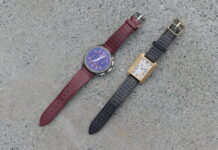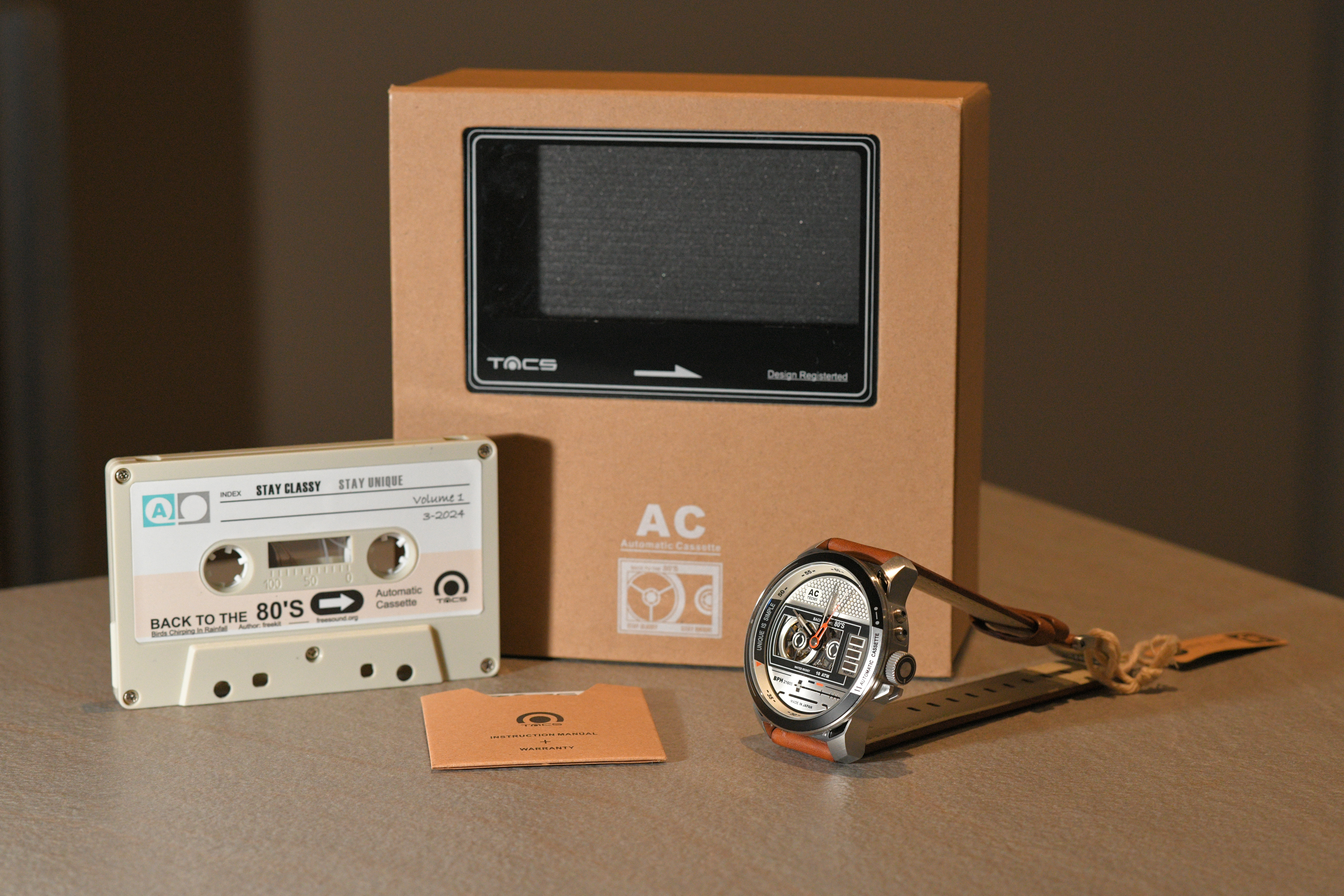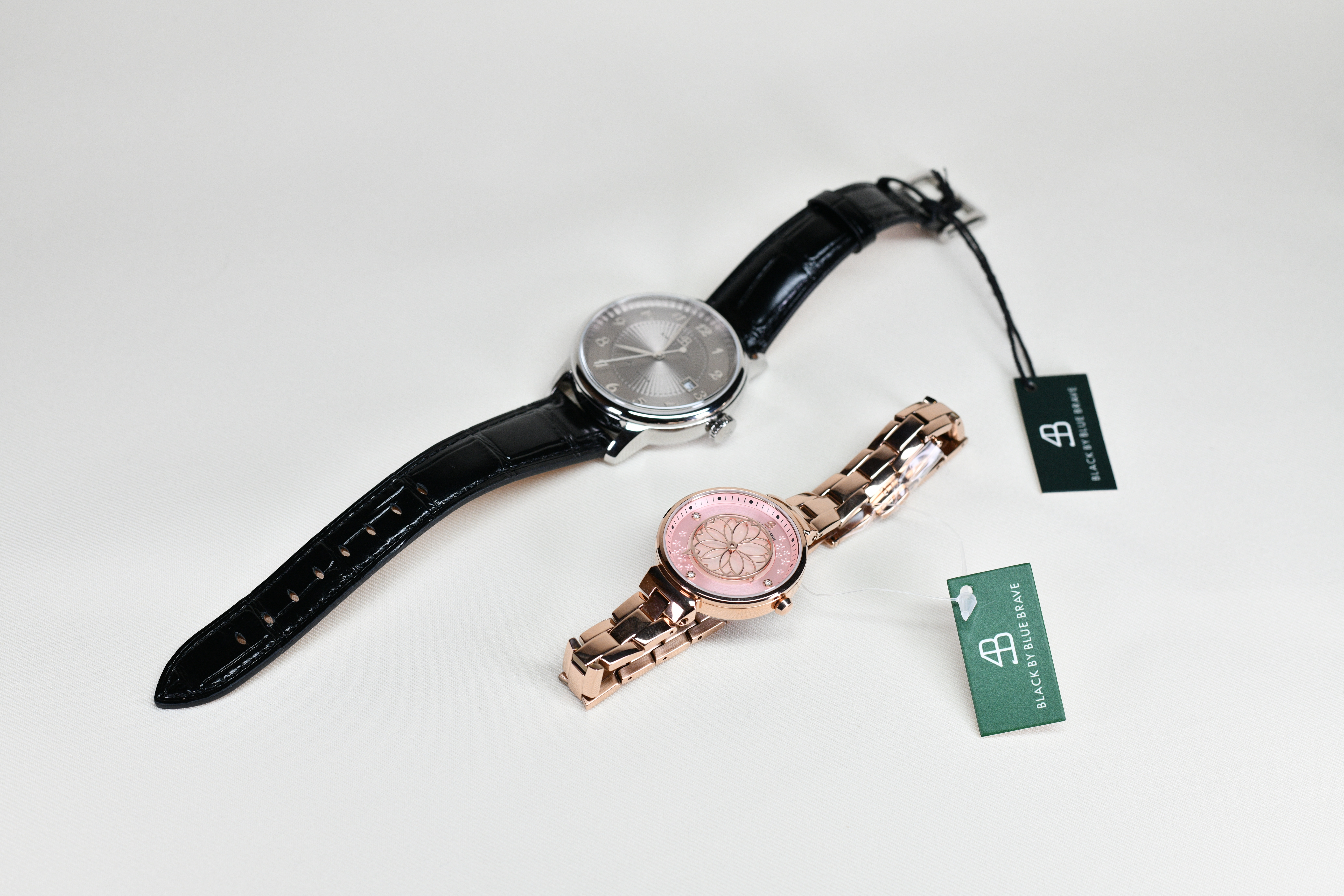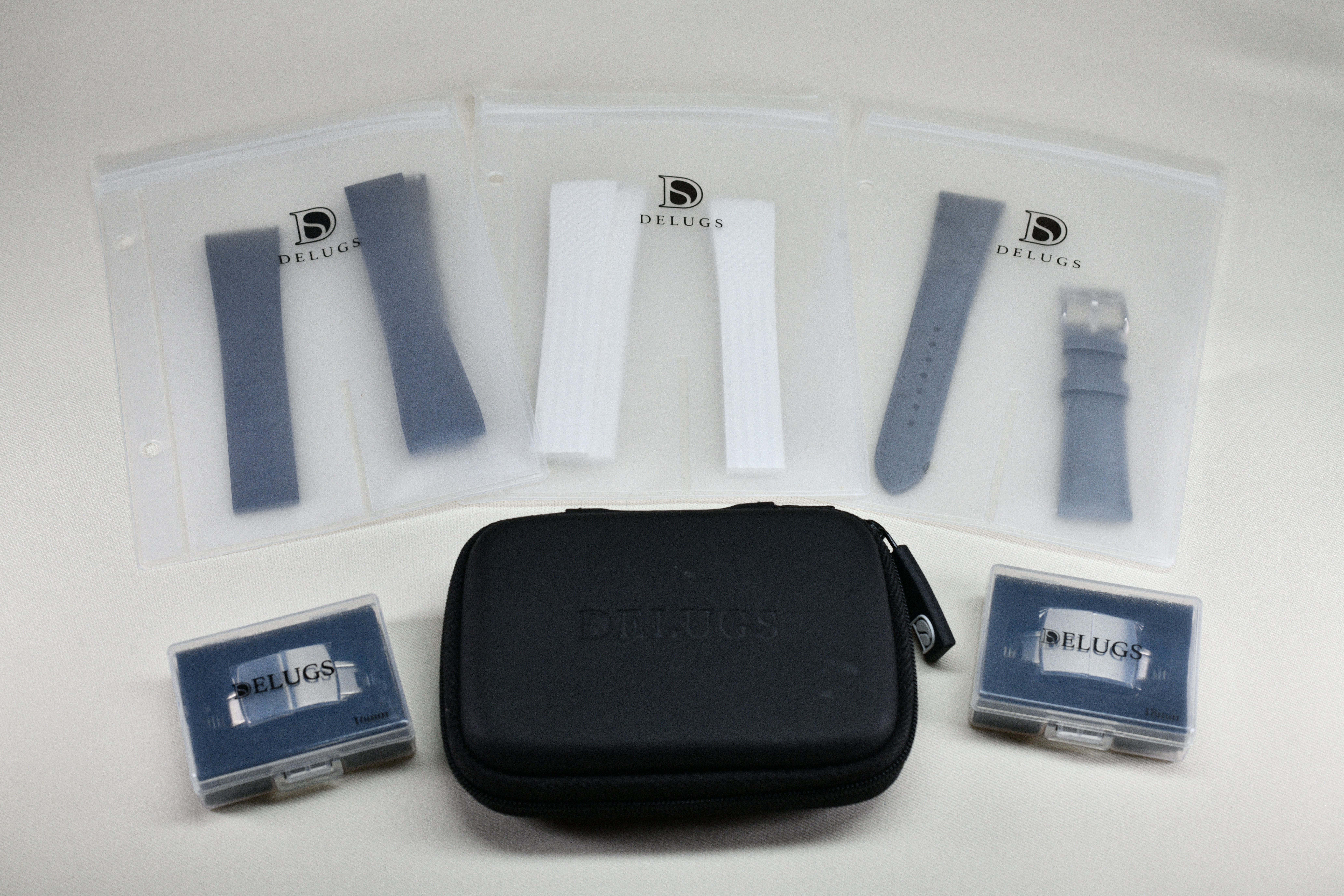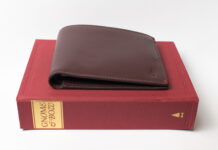Hi guys, today we will be moving back into watches. I’ve managed to secure quite a bit of watches for review in the upcoming weeks, so most of the review articles from here on out will be focused on watches, specifically microbrands. I hope to be able to use this platform to shine the spotlight on microbrands, especially in the watch industry, so that more people would know about the brilliant work that they do. Today, we will be looking at another Singaporean microbrand, Vorque.
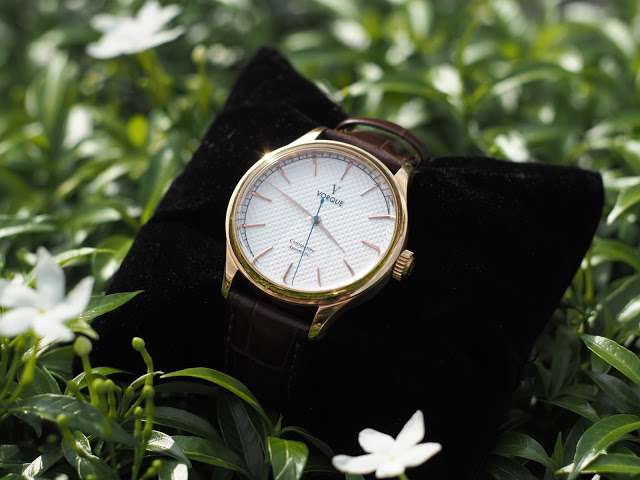
Vorque has kindly lent me a prototype of their debut model, the Constantine, for review. Currently, Vorque is trying to raise funds to produce the Constantine on Kickstarter – you can view the project here. Without further ado, let’s find out if the Vorque Constantine is shiok or not!
Vorque – The Brand
As aforementioned, Vorque is a homegrown Singaporean microbrand looking to make its mark in the saturated watch industry. According to their website, Vorque “believes in functionality, quality and value in our watches and that everyone should own a living, beating timepiece that is both beautiful and dependable”. Honestly, the description doesn’t say much – so I asked the some of the creators of Vorque out for a quick chat about their watchmaking journey.
The four-man team (Keith, Teddy, Gerald and Wei Yang) first got into the watch industry as watch re-sellers during their poly days, buying watches like Daniel Wellingtons (ew) at discounted prices from suppliers and selling them to the masses at market rates. Through their experiences as watch re-sellers, they realized the insane mark-ups that plague the fashion watch industry, and thus sought to create their own watch brand that would offer a quality timepiece at an honest price. Thereafter, Vorque was born.
The team flew to Hong Kong in 2015, bringing their initial design for the Constantine (sketched on graph paper) to watchmakers and manufacturers there. What’s astonishing was that they were only 19/20 years of age at that time. That, to me, is an incredibly ballsy move, and speaks of commitment and grit. Above all else, this tells me that the team behind Vorque is highly passionate, and into watchmaking for the long haul.
Back in 2015, Vorque launched their maiden crowdfunding campaign on Indiegogo, but unfortunately was not able to secure the requisite funding. Now, 2 years on, they are giving their dreams a second go, with the Constantine remaining unchanged. Let’s find out if the watch is worth the $619 (SGD) asking price.
Vorque Constantine – Build Quality
The Vorque Constantine prides itself in being a timepiece that can last you a lifetime. I’m pleased to say that the Constantine, for the most part, is a well-made watch.
First of all, the revered Swiss ETA 2824-2 movement powers the Constantine. I must admit, it was this that caught my eye first – it is incredibly rare for a microbrand to use ETA movements anymore. A few years back, the Swatch group acquired ETA, and almost immediately started to restrict ETA movements to manufacturers outside the Swatch group. As such, one tends to only be able to find ETA movements in big-name Swiss brands such as Hamilton and Tissot nowadays – Vorque is incredibly proud of the fact that the Constantine houses the same movement as Swiss watches costing $1000+.
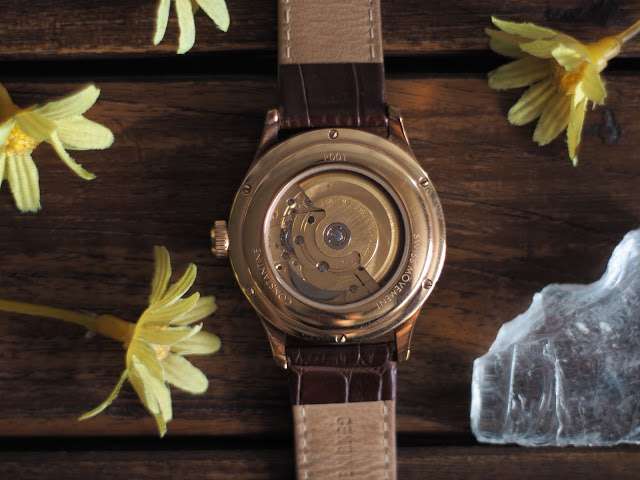
To watch newcomers, the ETA 2824-2 is a proven quality workhouse. For many years, and in fact even now, it is seen as the industry standard for high-end quality movements – the Sellita SW200-1, Miyota 9000 series, and STP 1-11 all looked to the design of the ETA 2824 for “inspiration”. In many regards, the ETA 2824 is the “original” – I know of many watch snobs who deem the abovementioned movements as mere ETA 2824 knockoffs.

A bit on the specifications: The ETA 2824-2 has 38 hours of power reserve, hacking feature, 4 Hz operating frequency, 25 Jewels and ETACHRON regulator system. It is one of the most recognizable movements in the watchmaking industry, so getting it serviced should be no problem (Aside from the cost, of course). In my experience with it, the watch kept good time, with an average of 4 seconds gained a day. I love the smooth second sweep of the ETA 2824 – there really is a considerable difference as compared to lower frequency movements such as the Seiko NH35 and the Miyota 8 series. If you would like to know more about the ETA 2824 movement, Worn & Wound has a fantastic article on it here.
I’ll also like to mention that the caseback is screwed on (6 screws), which is a nice touch and an upgrade over the usual snap-on caseback that you see with dress watches in this price range.
The Constantine also boasts a 2mm thick sapphire crystal with underside AR coating that helps protect the watch’s dial. As mentioned in my previous articles, sapphire crystal is virtually scratch-proof (unless you use your diamond ring to scratch it). The AR coating also helps reduce reflection, ensuring maximum visibility for the beautiful guilloche dial (more on that later). Another box ticked for me – this is one robust dress watch.

The watch is constructed out of 316L stainless steel, and has a water resistance of 30m. While that is quite paltry, this is a dress watch after all – just remember to leave the watch out of the shower or the pool. There is also no lume present, but again that’s forgivable given that this is a dress piece.
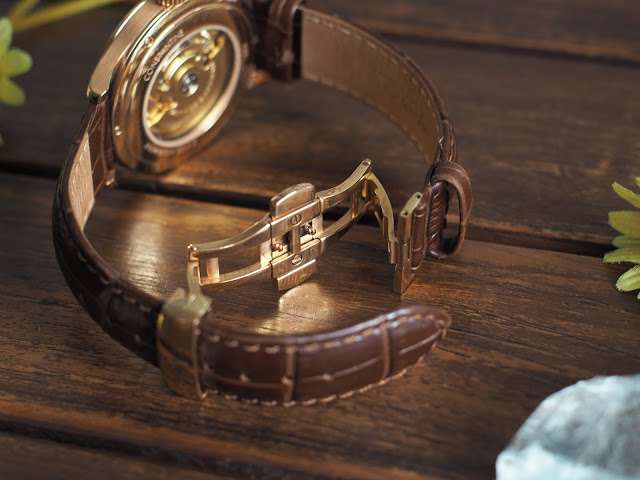
The Constantine comes with a “genuine leather” strap, and features a butterfly clasp, which is usually only seen in higher-end luxury watches. However, I have to say that the strap itself is, well, quite rubbish. Components wise, the strap is by far the weakest link. It’s stiff, with a cardboard-like texture – it just feels cheap on the wrist, and counteracts the luxurious feel that the Constantine is trying to give off. It looks like one of the stock, mass-produced straps that plague fashion watches such as Daniel Wellington and MVMT. Vorque, please get yourself a better strap supplier. Go for a full grain vegetable tanned Italian leather strap, or source one from esteemed strap manufacturers like Hadley-Roma.
Vorque Constantine – Design
For the most part, the components of the Vorque Constantine are rock solid (strap the exception). Lets delve into the design.

Let’s start with the positives. The guilloche dial (the particular version that the Constantine uses is called the Clous de Paris) on the watch is simply breathtaking, especially when it catches the light. For the non-watch nuts, Clous de Paris is a guilloché pattern on the dial of hollowed lines that intersect to form tiny pyramidal shapes.Traditionally, Clous de Paris guilloche pattern is mainly found in top-tier luxury watches (we’re talking crazy expensive kind) such as the Audemars Piguet Royal Oak. The resulting “waffle” dial gives the watch a distinctively vintage feel, which the team at Vorque told me was exactly what they were going for. I think the blue needle seconds hand is a great touch as well – it elevates the elegance of the piece, and gives it a pop of colour.

My only quibble with the dial would be the text at the 6 o’clock. The font and size looks off. In my opinion, Vorque should just remove the text completely – it detracts from the elegance of the guilloche dial, and those slender hands. If you really must include something, put something like “Swiss movement” instead! Also, I would have loved for the second hands to have been heat-blued, instead of faux-blued – it’s a detail that makes a world of difference to me.

So we know that the front of the watch is mostly beautiful. I’m glad to say that the back of the watch is no slouch either. I love that they opted for the gilded version of the ETA 2824-2 – again, it really makes the Constantine look much more luxurious than it’s price point. I was recently at a Cartier boutique (looking at the Cartier Tank XL Automatic, which by the way, is amazing value for money) and the Cartier Concierge said “That’s a really nice looking movement.” He was quite surprised to eventually learn that it wasn’t a Swiss/”branded” watch – after ushering me to a private room and serving my selection of drinks (I think wearing the Constantine on my wrist convinced him I was a “serious” watch buyer). The dial and case-back of the Constantine really punches above it’s weight.

In addition, the sides of the case is brushed, as compared to the front and back, which is polished. I like that the sides are brushed – it makes the Constantine slightly more understated, and not too “bling-y”. The crown is signed as well, with little gear-like grooves that increases tack when you wind the watch. In recent years, we have been seeing vintage inspired pieces becoming more and more popular (with major brands such as Tag Heuer, Tissot, Longines, Hamilton etc all bringing back “heritage” models) – and in the Constantine, I can clearly see why.

What I cannot see however, is the minute/second index track on the watch! I’m not sure if the picture makes my complaint obvious, but the boxed sapphire crystal distorts the edges of the dial, therefore making it hard for me to track the seconds hand on the index. The only plausible reason I could think of for the usage of a boxed crystal would be that Vorque was really going for a “retro” look, but it just doesn’t come together well here. I’ve seen several vintage-looking dress watches with track indexes these past few days (Glashutte Original Senator, Tissot Le Locle, even the piece that served as the inspiration for the Constantine, the Vacheron Constantine Traditionelle line) and they ALL had flat crystals. Depending on the angle of view, certain portions of the index track would disappear (in the case of the photo above, the 11-1 o’clock sections), and that just irritates the hell out of me. Also, I personally think that the usage of the railway track index would have been a better design idea instead – it would certainly be more in keeping with the vintage design ethos of the Constantine.
Vorque Constantine vs Tissot Le Locle
The Constantine’s greatest shortcoming I feel, is it’s value (or rather, the lack of it). Yes, on paper getting an ETA 2824-2 for $619 is sounds great – until one digs deeper into the market. To prove my point, I’ll compare the Constantine with the Tissot Le Locle.

Similar to the Constantine, the Tissot Le Locle feautres a center guilloche dial, as well a guilloche indexes track. I personally prefer this execution of the guilloche dial – it looks more refined and elegant. The applied indices here are a nice touch as well, and you get a date function! The sapphire here is flat, so there isn’t any distortion near the edges of the dial. Furthermore, you get Tissot’s Powermatic 80 movement, which boasts an outstanding 80 hours power reserve (that’s twice of the ETA 2824-2!), and better accuracy to boot. Lastly, Tissot is an actual Swiss brand, with a decorated watchmaking heritage – you’re getting a Swiss-made watch for $538 SGD, or $458 SGD if you opt for the stainless steel version! That’s amazing value, and something that I’m afraid the Vorque Constantine cannot compete with. Be it design, components, heritage, or price, the Tissot Le Locle has the upper hand, and thus wins this shootout.
Conclusion – So the Constantine “shiok” or not?
Unfortunately, I would have to say no. There are flaws to be solved – the boxed sapphire, the indexes track, the awkward text at 6 o’clock, the heat-bluing of the second hands and the atrocious leather strap – but what kills the Constantine is the price. At $619 for the rose gold version ($599 for the stainless steel), it’s venturing into Swiss-made territory, and I’m afraid Vorque simply cannot compete against companies like Hamilton and Tissot, who are offering their own improved and modified versions of standard ETA movements (H-10 from Hamilton, Powermatic 80 from Tissot) at prices cheaper than that of the Constantine. As of this point of writing, their Kickstarter campaign remains less than 10% backed, and with only two weeks to go, I think it’s safe to say that it’s highly unlikely that the project will be successfully funded. I highly suspect that price was the main stumbling block for potential backers.
I suggest the team at Vorque to go back to the drawing board, and don’t give up. Make no mistake, I think the watch has potential – it just has a few aforementioned flaws that needs to solved, and it needs to be priced much lower. I would honestly suggest them to stick a Miyota 9015 in this, and halve the price. At $300, this would be a much easier recommendation, and the Constantine would have stood out amongst dress watches in this price range due to it’s guilloche dial. It’s possible – BOLDR’s first project (back when it was still TravisLeon, I’ve attached a link to it here), offered a vintage-looking dress watch at $279 CAD ($292 SGD). They got fully funded and more, and the rest is history. More recently, Jubileon ditched the initial ETA 2824-2 movement for their Supereclipse and redesigned the watch. This year, they relaunched the Supereclipse on Kickstarter (link here) with a Seiko NH35A movement for $279 SGD, and got fully funded within a matter of days.
I think this is because those who would back Kickstarter watch projects tend to be fans of microbrands – and fans of microbrands tend to look more for design and price, rather than Swiss movements. If I wanted a Swiss movement, I would be looking at Swiss brands like Tissot and get a swiss-made watch – not at Kickstarter. Perhaps once fully funded, Vorque can offer Swiss movement upgrades as a stretch goal – but lower the price point to around $300 and get funded first.
Don’t get me wrong – like I said, the Constantine has potential, and I really do think the team behind Vorque are committed individuals. If they manage to lower the KS price for the Constantine (most probably by using a Japanese movement), and do a slight redesign of the dial, I really do think that third time might be the charm for them.
P.S Also, my social media channels are up! If you like my content, do follow me on Facebook here and Instagram here!
For more photos of the Vorque Constantine, you can visit the Flikr album here.
Photo credits:
https://static2.ethoswatches.com/media/catalog/product/cache/1/image/9df78eab33525d08d6e5fb8d27136e95/t/i/tissot-t-classic-t006-407-36-053-00-multiple-2.jpg

